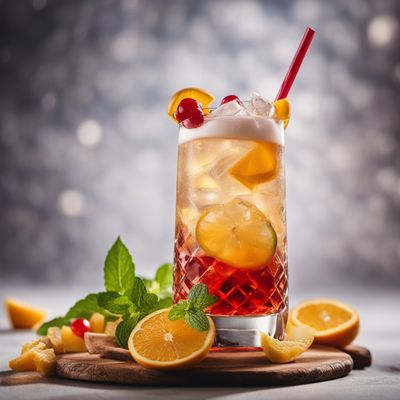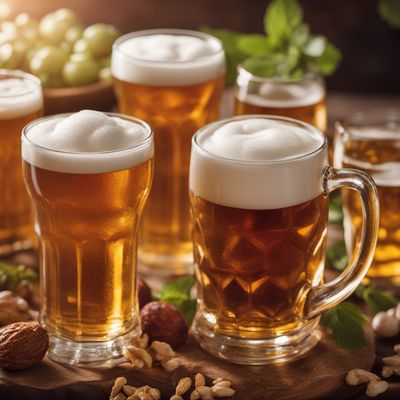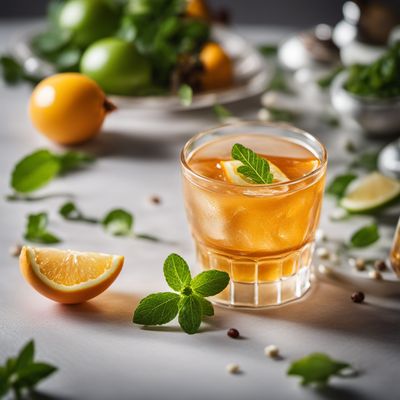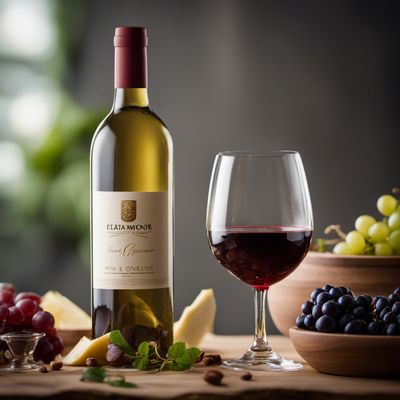
Ingredient
Edible alcohol
The Spirit of Culinary Delights
Edible alcohol, also known as culinary alcohol or cooking alcohol, is a clear, colorless liquid that is derived from the fermentation of various ingredients. It is primarily used as a flavoring agent, providing a distinct taste and aroma to dishes. With its high alcohol content, it evaporates quickly during cooking, leaving behind the essence of the ingredient. Edible alcohol can range in flavor from neutral to bold, depending on the type used, and it can be found in various forms such as vodka, rum, or brandy. Its texture is thin and watery, and it has no visible appearance once incorporated into a dish.
Origins and history
The use of alcohol in cooking can be traced back to ancient times, where it was used for both culinary and medicinal purposes. Different cultures have their own traditional alcoholic beverages that are deeply rooted in their history and customs. For example, wine has been produced for thousands of years in regions like Europe and the Middle East, while spirits like vodka and rum have a rich history in Eastern Europe and the Caribbean. Today, edible alcohol is widely used in cuisines around the world, adding depth and complexity to dishes.
Nutritional information
Edible alcohol is not a significant source of nutrients and is primarily used for its flavor-enhancing properties. It is important to consume alcohol in moderation and be aware of its potential effects on health and well-being.
Allergens
Edible alcohol may contain allergens such as sulfites, which can cause allergic reactions in some individuals. It is important to read labels and check for any potential allergens before using edible alcohol in recipes.
How to select
When selecting edible alcohol, look for high-quality brands that are suitable for culinary use. Opt for alcohol that is free from any off-putting odors or flavors. Consider the type of alcohol needed for the specific recipe, as different types can impart distinct flavors. Additionally, check the alcohol content, as higher proof alcohol may have a stronger impact on the final dish.
Storage recommendations
To maintain the freshness and quality of edible alcohol, store it in a cool, dark place away from direct sunlight. Keep the bottle tightly sealed to prevent evaporation and contamination. Avoid storing it near strong-smelling substances, as alcohol can absorb odors easily.
How to produce
Producing edible alcohol at home requires specialized equipment and knowledge of the fermentation process. It is recommended to leave the production of alcohol to professional distilleries and focus on its culinary applications instead.
Preparation tips
When using edible alcohol in recipes, it is important to consider the cooking method and timing. Add alcohol early in the cooking process to allow the flavors to meld and mellow. Be cautious when using alcohol in dishes that require long cooking times, as excessive heat can cause the alcohol to overpower the dish. Remember to adjust the seasoning accordingly, as alcohol can intensify flavors. Additionally, alcohol can be used to deglaze pans, create flavorful sauces, or add a finishing touch to desserts.
Culinary uses
Edible alcohol is commonly used in a variety of culinary applications. It is often used to deglaze pans and create flavorful sauces, such as a red wine reduction or a brandy cream sauce. It is also a key ingredient in many desserts, such as rum-soaked cakes or flambéed fruits. Additionally, edible alcohol is used in preserving fruits and making homemade extracts and infusions.
Availability
Edible alcohol is widely available in grocery stores, liquor stores, and specialty food stores worldwide. It is commonly used in various cuisines and can be found in both traditional and modern recipes.
More ingredients from this category

Mixed alcoholic drinks
The Art of Mixology: Crafting Exquisite Alcoholic Concoctions

Beer and beer-like beverage
The Golden Brew: Beer and Beer-like Beverage

Unsweetened spirits
The Essence of Pure Flavor: Unsweetened Spirits

Liqueurs
The Art of Liquid Indulgence

Wine and wine-like drinks
The Art of Fermentation: Exploring the World of Wine and Wine-like Drinks